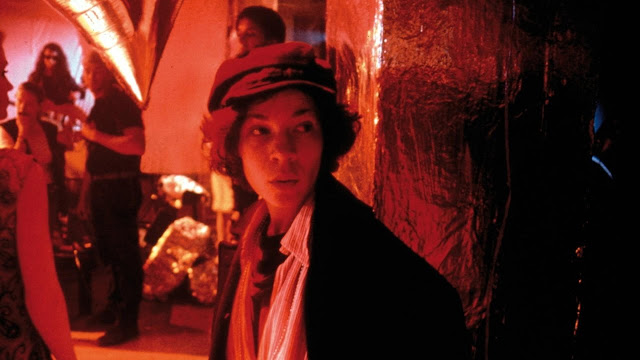This review is not going to contain spoilers but it is going to discuss the film in detail so if you wanted to watch it and feel like this would spoil it for you, then here is your warning to stop reading and go and watch the film.
*
I'd heard of The SCUM Manifesto long before watching this film; about how the information in it is pseudoscience, how even radical feminists denounce it, and that it was essentially the ramblings of a crazy person. Mary Harron's I Shot Andy Warhol (1996) gives depth to its author, Valerie Solonas, and to her work which had previously been disregarded. It is a traditional biopic in that it relays her life but specifically hones in on the event that made her famous, harassing and eventually shooting the artist, Andy Warhol. We see these events alongside extracts of her book, illustrating the state she was in when this violence happened as well as the society that made her.
 |
| Source: IMDb |
Mary Harron introduces us to the antithesis of what many modern feminists believe about feminism. It breaks through the supposed cohesion of this school of thought and asks us to look at some of its more unpleasant roots. Valerie Solanas is a nightmare scenario for feminists because she is a symbol of what patriarchy believes all feminists look and sound like. And yet, there is something about her that I just couldn't hate. She is definitely brash and unlikeable, but what Harron does is round out the image of her, forcing the audience to understand why she believes what she believes and why she wanted people to hear what she had to say so badly. Harron seems to have a habit in redeeming women who in the past have been very heavily villianised. For example, work like Charlie Says (2018) attempts to paint a complex portrait of the Manson girls and The Notorious Bettie Page (2005) does the same with its titular character. What I like about her work is that her discussions of gender remain complex and not heroising, which can be a pitfall of the biopic.
The portrayal of Andy Warhol in this film is absolutely fascinating because he does not come of well. Generally, he is considered one of the greatest artists of all time, a genius, but here, he mostly comes off as a rich prick who is patronising and dismissive of Solanas simply because of who she is. The film makes no vagueness around the astonishing divide between the rich bohemian artists and the working class people attempting to enter the art world. The aesthetic of grime and progressiveness is shown to be more appealing to these people than having actual oppressed people in these spaces making what they want. There are small sections where Valerie is shown reading her work as if in one of Warhol's films. She is in black and white, and highlighted by a spotlight. We see that in the character's mind, she is worthy of being listened to, of being on film even. And then, it cuts to her reality, which is having sex with men for money or begging on the street. These fantasy scenarios are escapism for this character, unattainable to those who don't have the privilege of money and power.
Valerie was a radical feminist who hated men and was transphobic. She was also a mentally ill lesbian, who was both homeless and a sex worker. She had been abandoned by the system on multiple levels, and the film is able to frame SCUM as an expression of her anger rather than a serious scientific document that represents all of radical feminism during this time period. The film refuses to take the notion that this woman had any power to enact what she was writing seriously. Her only expression of power comes in committing a violent crime which ultimately leaves her powerless.